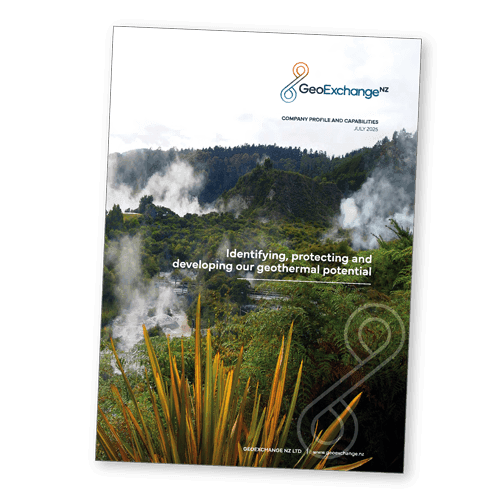Identifying, protecting and developing our geothermal potential
Using low temperature geothermal to decarbonise and electrify Aotearoa New Zealand
GeoExchange NZ Limited is a multidisciplinary team of scientists, engineers and social scientists that provides independent design and advisory services to the public and private sector on geoheat systems.
Our advantage lies in our unique capability to integrate the disciplines of mechanical engineering, environmental sciences, systems thinking, social sciences and some design philosophy. Combined with over seventy years of local and international experience we identify simple and elegant system solutions that solve multiple problems.
A good solution is never just a matter of swapping out a boiler for an equivalent-sized heat pump!
What we do at GeoExchange NZ
Regional studies and advisory
International and national commercial research
Project feasibility
Detailed design, documentation and site inspection
Project management and installation
Energy as a service model
Resource management advisory
Service and maintenance
System audits
The Energy Transition
The global energy transition is an opportunity to reimagine how and why we use energy. By prioritising our use of thermal energy (heating, cooling and hot water) a more equitable future energy system is possible.
Equitable outcomes include:
Lower energy costs;
Lower CO₂ emissions;
Healthier buildings;
Cleaner industry; and
A more stable power grid where the scale and cost of required upgrades to the power grid are reduced by smart management.
Heating accounts for half of global energy consumption and is predominantly done using fossil fuel boilers. To decarbonise our energy sector by replacing these fossil fuel boilers we need wholistic technology solutions that:
Prioritise efficiency and demand management;
Are optimised on a site-specific basis;
Substantially reduce carbon emissions;
Consider the full thermal energy system (e.g. heating, cooling, hot water, pools etc); and
Consider integration with the electrical energy system (e.g. annual usage, peak loads, more renewables).
Geoheat provides an opportunity for a sustainable cleaner and fairer Aotearoa New Zealand energy system and can play a significant role in supporting the transition to a carbon zero future

Our Company Profile and Capabilities
Read more about our work with sustainable ground-source Geoheat, the industries we work for and our projects to date. Download a pdf of our Company Profile.



